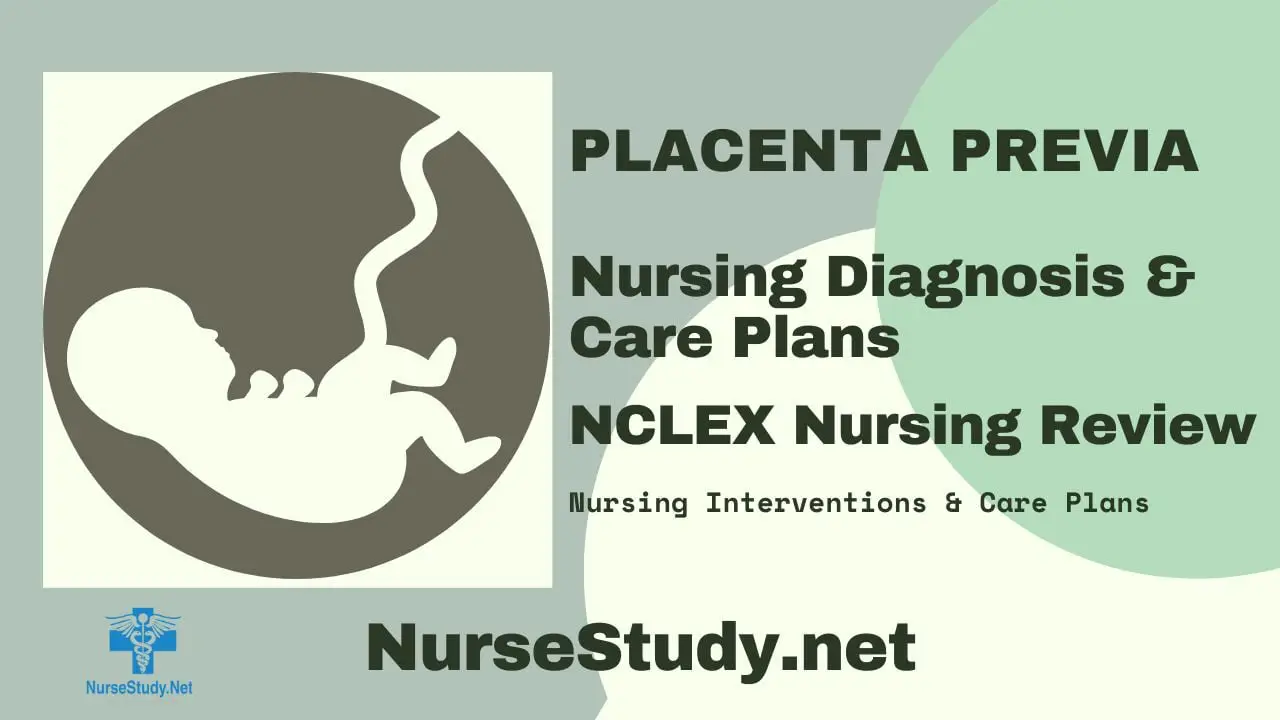Placenta previa is a serious pregnancy complication where the placenta partially or completely covers the cervical opening. This comprehensive nursing guide explores the condition in detail, focusing on essential nursing diagnoses, interventions, and care plans to ensure optimal patient outcomes.
Understanding Placenta Previa
Placenta previa occurs when the placenta implants in the lower uterine segment rather than the upper portion. This positioning can lead to significant bleeding during pregnancy or delivery, potentially endangering both mother and baby. Early recognition and proper nursing management are crucial for preventing complications.
Key Risk Factors
Several factors increase the likelihood of developing placenta previa:
- Previous cesarean deliveries
- Multiple pregnancies
- Advanced maternal age (35 years or older)
- Previous uterine surgeries
- Smoking during pregnancy
- Multiple previous pregnancies
- In vitro fertilization
Clinical Manifestations
The primary symptom of placenta previa is painless vaginal bleeding, typically occurring during the second or third trimester. However, some patients may remain asymptomatic until the condition is discovered during routine ultrasound screening.
Nursing Process Overview
The nursing process for placenta previa patients requires careful assessment, planning, and intervention. Nurses play a vital role in monitoring bleeding, ensuring fetal well-being, and providing emotional support throughout the pregnancy.
Essential Nursing Care Plans
1. Risk for Maternal Hemorrhage
Nursing Diagnosis: Risk for Maternal Hemorrhage related to abnormal placental positioning and potential placental separation.
Related Factors:
- Placental location over cervix
- Uterine contractions
- Physical activity
- Advanced gestational age
Nursing Interventions and Rationales:
- Monitor vital signs every 2-4 hours or as indicated
Rationale: Early detection of hemodynamic changes indicates blood loss - Quantify and document any vaginal bleeding
Rationale: Helps track blood loss progression and determine intervention needs - Maintain IV access with large-bore catheter
Rationale: Ensures immediate access for fluid or blood administration - Position the patient on the left side
Rationale: Optimizes uteroplacental blood flow
Desired Outcomes:
- The patient will remain free from excessive bleeding
- Vital signs will remain within normal limits
- Fetal heart rate will remain reassuring
2. Anxiety Related to Pregnancy Outcome
Nursing Diagnosis: Anxiety related to uncertain pregnancy outcome and potential complications.
Related Factors:
- Fear of fetal loss
- Concern about maternal health
- Hospitalization
- Activity restrictions
Nursing Interventions and Rationales:
- Provide clear, accurate information about the condition
Rationale: Knowledge reduces fear and promotes cooperation - Teach relaxation techniques
Rationale: Helps manage stress and anxiety - Include family members in care planning
Rationale: A support system enhances coping abilities
Desired Outcomes:
- The patient will demonstrate reduced anxiety levels
- The patient will verbalize understanding of the condition
- The patient will utilize effective coping mechanisms
3. Activity Intolerance
Nursing Diagnosis: Activity Intolerance related to prescribed bed rest and bleeding risk.
Related Factors:
- Medical restrictions
- Risk for hemorrhage
- Pregnancy-related fatigue
- Fear of movement
Nursing Interventions and Rationales:
- Assist with position changes every 2 hours
Rationale: Prevents complications of immobility - Teach appropriate bed exercises
Rationale: Maintains muscle tone and prevents DVT - Monitor for signs of depression
Rationale: Extended bed rest can affect mental health
Desired Outcomes:
- The patient will maintain muscle strength within the limitations
- The patient will remain free from complications of immobility
- The patient will comply with activity restrictions
4. Deficient Knowledge
Nursing Diagnosis: Deficient Knowledge related to unfamiliarity with placenta previa management and complications.
Related Factors:
- Lack of exposure to information
- Misinterpretation of available information
- Anxiety interfering with learning
Nursing Interventions and Rationales:
- Provide educational materials about placenta previa
Rationale: Written materials reinforce verbal teaching - Demonstrate warning signs requiring immediate attention
Rationale: Enables prompt recognition of complications - Review medication purposes and side effects
Rationale: Promotes medication compliance and safety
Desired Outcomes:
- The patient will verbalize understanding of the condition
- The patient will identify warning signs requiring medical attention
- The patient will demonstrate knowledge of self-care measures
5. Risk for Impaired Fetal Well-being
Nursing Diagnosis: Risk for Impaired Fetal Well-being related to potential uteroplacental insufficiency.
Related Factors:
- Maternal hemorrhage
- Compromised placental blood flow
- Premature labor risk
- Maternal anxiety
Nursing Interventions and Rationales:
- Monitor fetal heart rate patterns regularly
Rationale: Identifies early signs of fetal distress - Perform daily fetal movement counts
Rationale: Provides a baseline for fetal well-being - Maintain optimal maternal positioning
Rationale: Enhances uteroplacental perfusion
Desired Outcomes:
- Fetal heart rate will remain within normal parameters
- Fetal movement patterns will remain reassuring
- Pregnancy will progress to optimal gestational age for delivery
Prevention and Education
- Activity restrictions
- Warning signs requiring immediate medical attention
- Importance of regular prenatal visits
- Stress management techniques
- Preparation for possible cesarean delivery
References
- Anderson-Bagga FM, Sze A. Placenta Previa. [Updated 2023 Jun 12]. In: StatPearls [Internet]. Treasure Island (FL): StatPearls Publishing; 2024 Jan-. Available from: https://www.ncbi.nlm.nih.gov/books/NBK539818/
- Ackley, B. J., Ladwig, G. B., Makic, M. B., Martinez-Kratz, M. R., & Zanotti, M. (2023). Nursing diagnoses handbook: An evidence-based guide to planning care. St. Louis, MO: Elsevier.
- Bhide A, Thilaganathan B. Recent advances in the management of placenta previa. Curr Opin Obstet Gynecol. 2004 Dec;16(6):447-51. doi: 10.1097/00001703-200412000-00002. PMID: 15534438.
- Harding, M. M., Kwong, J., & Hagler, D. (2022). Lewis’s Medical-Surgical Nursing: Assessment and Management of Clinical Problems, Single Volume. Elsevier.
- Herdman, T. H., Kamitsuru, S., & Lopes, C. (2024). NANDA International Nursing Diagnoses – Definitions and Classification, 2024-2026.
- Ignatavicius, D. D., Rebar, C., & Heimgartner, N. M. (2023). Medical-Surgical Nursing: Concepts for Clinical Judgment and Collaborative Care. Elsevier.
- Lodhi SK, Khanum Z, Watoo TH. Placenta previa: the role of ultrasound in assessment during third trimester. J Pak Med Assoc. 2004 Feb;54(2):81-3. PMID: 15134208.
- Silvestri, L. A. (2023). Saunders comprehensive review for the NCLEX-RN examination. St. Louis, MO: Elsevier.
